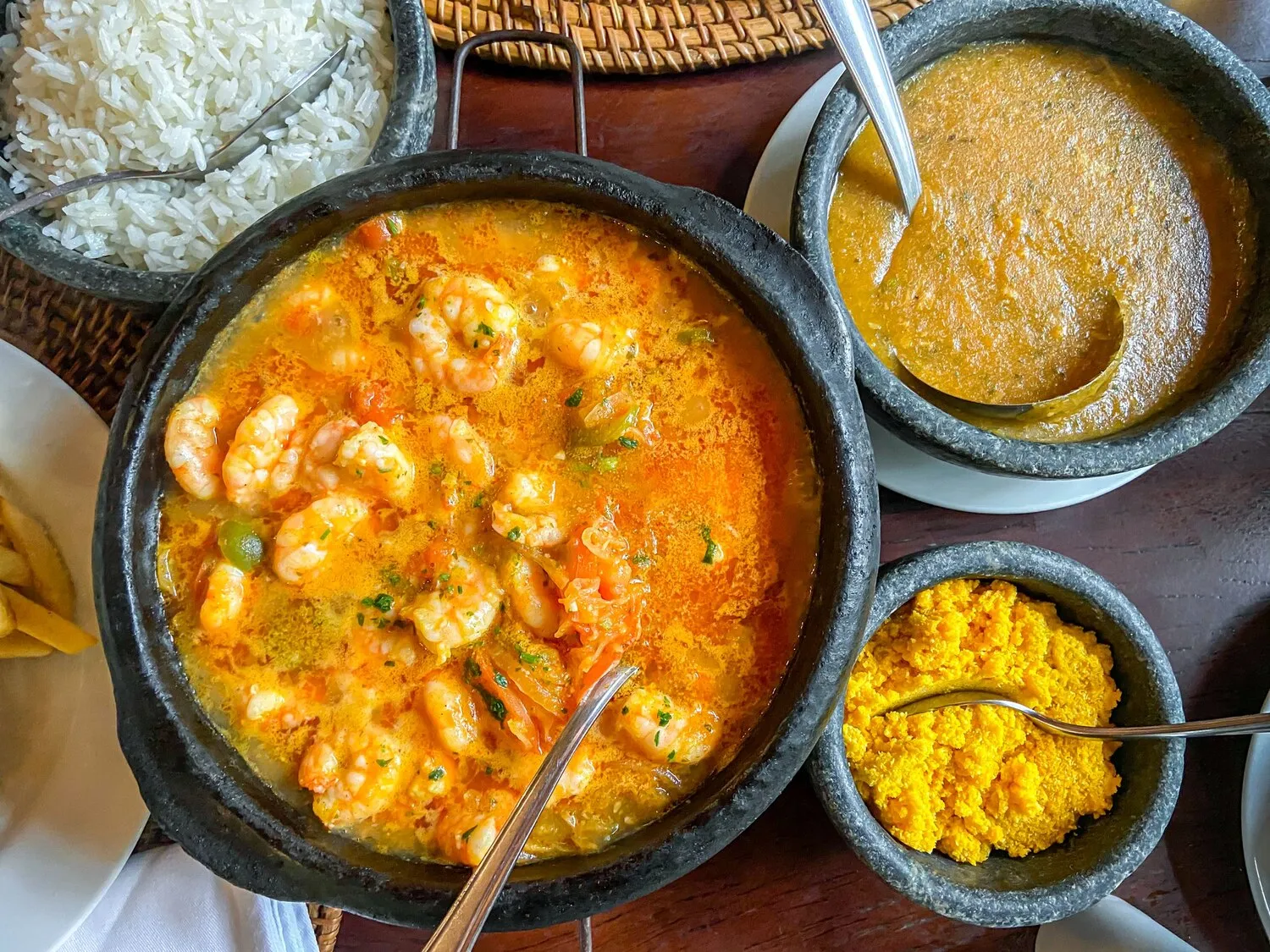
Moqueca Cearense
Fish stew with vegetables, coconut milk, and dendê oil.
Nutrition Facts
* The % Daily Value (DV) tells you how much a nutrient in a serving of food contributes to a daily diet. 2,000 calories a day is used for general nutrition advice.
Balcone Restô - Meireles
Moqueca's origins are rooted in the indigenous cooking methods of Brazil, specifically combining seafood with local vegetables. Over time, African influences, particularly the introduction of coconut milk and dendê oil (palm oil), shaped the dish into what it is today. Moqueca Cearense is a regional variation from the state of Ceará, known for its own unique twist on the classic stew.
Moqueca is more than just a dish in Brazil; it's a cultural symbol, representing the country's diverse culinary heritage and the blending of indigenous, African, and European influences. It's often associated with celebrations, family gatherings, and coastal regions.
Regional Variations
Moqueca comes in two main varieties: Moqueca Capixaba (from Espírito Santo) and Moqueca Baiana (from Bahia). Moqueca Cearense is a regional variation, often considered closer to Moqueca Capixaba because it often omits dendê oil, though some recipes still include it. Each version reflects the local ingredients and culinary preferences of its region.
Social Gatherings
Moqueca is frequently served at social gatherings, especially in coastal communities. It's a dish meant to be shared, often cooked in a large clay pot and served family-style with rice, pirão (a cassava flour porridge), and farofa (toasted cassava flour).
Coastal Identity
Moqueca is deeply connected to Brazil's coastal identity. It embodies the bounty of the sea and the resourcefulness of the people who live by it. The use of fresh, locally sourced ingredients is a testament to this connection.
Moqueca Cearense is characterized by a rich, savory flavor profile with a subtle sweetness and aromatic complexity. The fresh seafood is complemented by the creamy coconut milk and the distinct, slightly earthy taste of dendê oil, while vegetables add brightness and texture.
The main flavors derive from the combination of fresh fish (typically white fish like grouper or snapper), tomatoes, onions, bell peppers, garlic, cilantro, coconut milk, and dendê oil. The fish provides a delicate, briny base, while the vegetables contribute sweetness and acidity. Coconut milk adds a creamy richness, balancing the other flavors. Dendê oil, a key ingredient, lends a unique orange color and a slightly earthy, almost nutty flavor that distinguishes Moqueca from other fish stews. Lime juice is often added for brightness and to balance the richness.
Freshness is Key
Use the freshest fish and vegetables available. The better the quality of the ingredients, the more flavorful the final dish will be. Look for firm, bright-eyed fish and vibrant, unblemished vegetables.
Gentle Cooking
Cook the Moqueca over low to medium heat to prevent the fish from overcooking and becoming dry. Allow the flavors to meld gradually, creating a richer, more complex sauce.
Don't Stir Too Much
Avoid stirring the Moqueca too much, especially after adding the fish. This can break the fish apart. Gently shake the pot occasionally to ensure even cooking.
Salt to Taste
Salt is important. Adjust the seasoning carefully throughout the cooking process. Taste and adjust as needed to bring out the best in the flavors.
Explore additional Stew dishes and restaurants
Explore StewDiscover top dining spots and culinary experiences in Fortaleza.
Explore FortalezaLearn more about the food culture, restaurant scene, and culinary heritage of Brazil.
Explore Brazil